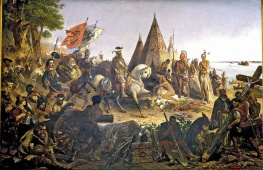This edition is published by PICKLE PARTNERS PUBLISHINGwww.pp-publishing.com
To join our mailing list for new titles or for issues with our bookspicklepublishing@gmail.com
Or on Facebook
Text originally published in 1947 under the same title.
Pickle Partners Publishing 2016, all rights reserved. No part of this publication may be reproduced, stored in a retrieval system or transmitted by any means, electrical, mechanical or otherwise without the written permission of the copyright holder.
Publishers Note
Although in most cases we have retained the Authors original spelling and grammar to authentically reproduce the work of the Author and the original intent of such material, some additional notes and clarifications have been added for the modern readers benefit.
We have also made every effort to include all maps and illustrations of the original edition the limitations of formatting do not allow of including larger maps, we will upload as many of these maps as possible.
NATCHEZ ON THE MISSISSIPPI
BY
HARNETT T. KANE
ABOUT THE AUTHOR
HARNETT THOMAS KANE, born in 1910, is a native New Orleanian and lifelong resident of the South. He was graduated in 1931 from Tulane University, where he was editor of the school paper and won the Dorothy Dix feature story award. He began newspaper work, full time, while a sophomore at Tulane, and continued on the New Orleans Item for sixteen years, during which he covered everything from murders to the business run, and served for a time on the city desk and copy desk. When the famous Louisiana scandals broke, young Mr. Kane was assigned to cover them; from that assignment, which his newspaper called one of its greatest examples of reporting, came his first book, Louisiana Hayride : The American Rehearsal for Dictatorship . The success of the book settled his future: since then he has been writing full time.
His second book, Bayous of Louisiana , opened a wide new field for Harnett Kane. In it he presented the strange life on the waterways and bayous of Louisiana in a way never before attempted. In quick succession came Deep Delta Country in the American Folkways Series, the saga of the land about the Mississippi River mouth, where people live in houses like matchboxes on stilts; Plantation Parade , giving the panorama of the sugar barons of Louisiana; and New Orleans Woman, a Biographical Novel of Myra Clark Gaines , an instant success.
Harnett T. Kane is recognized as one of the most popular writers and leading authorities on the South. He is a prophet with honor in his own country, where each of his books has drawn a wider audience, and Natchez on the Mississippi bids fair to enhance that reputation.
INTRODUCTIONRIVER COUNTRY
IN ITS surging passage below Memphis toward the Gulf of Mexico, the Mississippi, greatest of American rivers, comes to a high, sun-splashed hill. To the West, the green, alluvial lowlands of Louisiana stretch mistily toward the horizon. To the East, bordering the state of Mississippi, rise two hundred feet of red-brown bluff, crowned by vines of wild grape, magnificent magnolias and the sweep of oak. The river itself seems to change here. As if reluctant to leave, it makes a wide crescent of lake-like tranquillity; then it turns again to glide, silver and yellow, into the distance.
The tops of a few gleaming white columns, the mighty among myriad smaller buildings, all flanked by clusters of verdant growth, are just barely in sight above the hill. At the base of the bluff, a huddle of weather-worn huts leads to a road that climbs with occasionally sharp steepness to the old town of Natchez. From the ancient plaza, dating from the days of the Spaniards, tree-bordered streets fan out in several directions over the slow lift and fall of the land. These thoroughfares rapidly peter out into side-roads and trails leading to the half-concealed houses of the planter families.
To reach the early homes, the heart of the region, means traveling over a pastoral terrain without parallel in the nation. This bluff soil is composed of loess, a thin, chalk-like deposit borne by the winds and deposited for only a few miles width along the Mississippis course. On the flat Western side of the river, the passage of the silt-laden waters built up the rich, dark ground. Natchez bluff, however, grew through the centuries by infinitesimal degrees, under the endless rush of air. In only a few places is such soil found; China is one of them.
This soft earth wears rapidly, and under the constant movement of man and vehicle through the years the roads have been ground lower and lower. Almost perpendicular walls of earth, sometimes twenty-five feet high or higher, rise from the sides of the sunken trails. A ride along one of them is like a journey through a three-sided tunnel, into which crawl, far above, the roots of trees and shrubs, as if reaching for those who pass. Still farther up, the tops golden in the sun, thick vegetation climbs toward the sky. Along these routes is a cool gloom, damp and rustling with fallen leaves, fragrant with pine and crushed flowers and the elemental smell of the wet soil. Then comes a turn and in the distance, crowning a slope, stands the plantation house in the clear white light.
* * * * *
Natchez...The town and the country about it had a long appointment with American destiny, a history alternately turbulent and placid. Through the centuries, men of many nations halted here, stirred by the soaring beauty of the point and its promise of advantage. The name came from a nation of Indians, advanced, haughty, apparently an offshoot of the Aztecs to the South. In 1682 La Salle and his followers floated past in their search for the rivers mouth, and first told the world of the high bluff. Then for nearly forty years, only the ceremonial drums of the Indians and the darkening flights of wild birds disturbed the silences of the Mississippi.
In 1700, the French founders of Louisiana chose the spot as the rivers finest for a permanent settlementhealthful, wind-swept, well above the murky swamps of its vicinity. It became a military post, and almost found itself the political capital of all the lower valley. The designation lay between it and a marshy flat closer to the Gulf, La Nouvelle Orlans. By a small margin, the latter won; nevertheless a corner of France grew up at Natchez.









